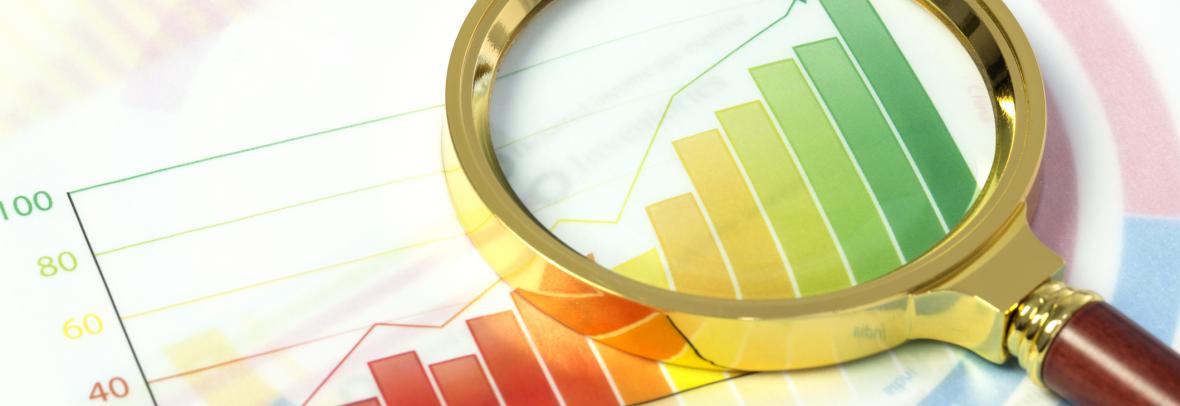
Expect a rosier economy in 2021 as COVID-19 cases drop, business restrictions loosen and stimulus aid juices growth. But many still struggle due to pandemic issues.
McLEAN, Va. – Economists this week shared some remarkably optimistic news: Even with the damage of the pandemic, the economy is expected to boom this year as coronavirus cases drop, business restrictions loosen and COVID-19 relief money juices growth.
“The thing is, this was supposed to be a dark winter,” said economy reporter Paul Davidson, who reported the rosier outlook in a recent USA TODAY story. “We had obviously a really strong recovery in the third quarter. But then things really slowed down and this was expected to be a very rough period, largely because of the COVID surges.
“So it almost seemed like magically things have turned around.”
However, he cautioned in his story, “That doesn’t mean the crisis will avoid the long-lasting scars experts have feared: shuttered businesses, millions of long-term unemployed Americans and millions of others who have dropped out of the labor force.”
That’s the rub of the economic recovery. While some Americans have built up savings and are ready to spend, others are in food lines or relying on rent assistance. And this all comes as Congress is debating President Joe Biden’s $1.9 trillion coronavirus relief plan. The House was expected to vote on it Friday.
To help make sense of the news, I pulled together USA TODAY’s economic experts: financial reporters Davidson, Charisse Jones and Jessica Menton; White House reporter Michael Collins; and economy editor David Brinkerhoff. Here are their insights.
Bright forecasts fueled by previous coronavirus relief efforts
Davidson said due in part to the relief money, including stimulus checks and enhanced unemployment benefits, Americans have saved $1.6 trillion more than what they had before the pandemic.
“January was not supposed to be a good month for retail sales, but it turned out to be a great month, a 5.3% rise in retail sales. So that really woke everybody up that these effects are actually happening maybe sooner than people thought, that people are spending this money they’ve saved up.”
And since consumer spending is 70% of the economy, “that was the biggest thing.”
The current package most likely will pass, said Collins, “it’s just a matter of what the final vote is and what’s included in it.”
The legislation includes $1,400 checks for Americans earning $75,000 or less, or $2,800 for couples earning $150,000 or less, plus $1,400 per dependent.
It also renews the Paycheck Protection Program for small-business loans, provides funding to help schools reopen, extends federal unemployment benefits through the end of August and boosts the amount to $400 per week. It also proposes to raise the federal minimum wage to $15 an hour from $7.25 by 2025.
Critics say it may go too far, adding money for unrelated social policy initiatives, risking a spike in inflation and swelling the national debt.
But not everyone is getting the relief they need. Some make too little to file taxes, so they aren’t in the system to receive checks.
Menton reported that 8 million households haven’t received their $1,200 checks yet from the first round of stimulus payments last April. “Experts are concerned that many of those households may have also been left out of the $600 round of checks that were issued in December,” she said.
The IRS launched a tool in the spring so that those who don’t file taxes could still get checks. Still, many weren’t aware of those tools or didn’t have the technology to register.
And that means the low-income and hourly workers who have been hit hard by the pandemic could potentially miss out again on the next round of relief checks. Biden asked the Treasury Department last month to reevaluate its delivery structure for those checks.
Those who didn’t receive the stimulus money in the first two rounds may qualify to claim the Recovery Rebate Credit on their tax returns. To get that owed money, taxpayers must file a 2020 federal income tax return, including those who don’t normally file taxes.
Some people have had to drop out of the workforce entirely
Meghan Hullinger, 37, of Marlinton, West Virginia, is one of hundreds of thousands of women, particularly Latinas and Black women, pushed out of the workforce over the past year. When the pandemic hit and schools closed, relatives could no longer help out with her four kids, forcing her to leave her job.
“COVID took away my village,” Hullinger told national correspondent Romina Ruiz-Goiriena. In May, she started a part-time job where she could work from home some days and is on a wait list for subsidized child care.
Ruiz-Goiriena asked people around the country how they would spend a $1,400 stimulus check. Their answers: child care, medical costs, utility bills, car loans, small business seed money and furthering their education.
Tiffany Velez, 38, said she was trying to save money on food to pay off the $1,300 her family owes in gas and electricity.
“All I need to do is find a little extra,” Velez told Ruiz-Goiriena. “I keep thinking if we pay something every week they won’t shut the power off.”
A stimulus check would settle the balance, she said.
What this all means: Many economists believe we’re in a K-shaped economy, with part of the population doing better, or exceedingly well, while others are falling off a cliff financially. Just look at housing. We’re seeing a rise in housing sales and prices while more people fall behind on their rent or mortgages.
“It’s unclear how long this K-shaped economy will last,” Jones said. “The gap may narrow heading into 2022 or 2023 in the wake of government relief packages, vaccinations and the economy more fully reopening. But it’s hard to predict.
“It’s getting better, but it depends on where you sit.”
Copyright © 2021, USATODAY.com, USA TODAY, Nicole Carroll, editor-in-chief.
Go to Source
Author: marlam



